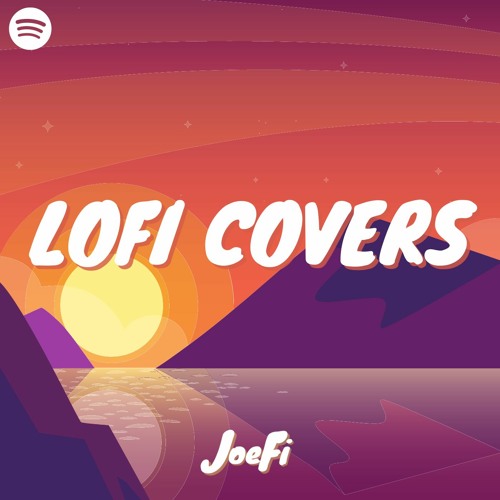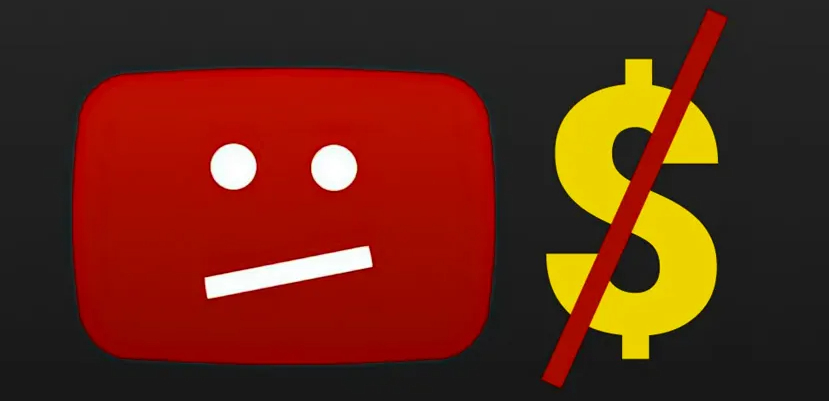Cover Versions: Your guide to producing and releasing a killer cover
Cover versions have established themselves as a popular and accessible way for musicians to showcase their creativity and connect with audiences. Whether you’re a seasoned musician or just starting out, producing and releasing covers can be a rewarding venture. In this guide, we’ll walk you through the steps involved in producing, releasing and sharing your cover versions with the rest of the world… legally.
What Is a Cover Song?
A cover song is a rendition of an existing piece of music, originally performed by another artist or group. Covering a song allows musicians to pay tribute to their musical influences, connect with their audience, and experiment with different styles and arrangements. While the core elements of the original song remain intact, the cover artist often adds their personal touch, making it unique and giving it their own signature sound.
Putting Your Own Stamp on a Cover
To create a killer cover, it’s essential to put your stamp on it. Here are some tips to make your cover versions unique:
1. Add Personal Flair
Inject your unique musical identity into the song. Whether it’s your vocal style, instrumental skills, or creative arrangements, make sure the cover reflects your artistic personality.
2. Reinterpret the Lyrics
Consider changing the perspective or meaning of the lyrics. This can add depth to the cover and make it stand out. For example, flipping the gender of the narrator in the lyrics or altering the context can be a thought-provoking twist.
3. Experiment with Arrangements
Don’t be afraid to experiment with different instruments and arrangements. Sometimes, subtle changes like incorporating a different chord progression, tempo, or instrumentation can make a cover version unforgettable.
Remember, the goal is to make the song your own while respecting the original artist’s work.
Changing the Musical Style
One of the most exciting aspects of creating cover versions is the opportunity to reimagine a song in a different musical style. Here are a few common style variations you can explore:

1. Lofi
Lofi cover versions are known for their relaxed and somewhat “imperfect” sound. They often feature elements like vinyl crackle, soft synths, and simple drum patterns. Lofi covers can provide a fresh perspective on a song, turning a high-energy track into a more calming and introspective experience. Lofi also provides a perfect platform for instrumental covers if singing is not your bag.
2. House
If you’re inclined toward electronic music, transforming a song into a house-style cover can be the way to go. Utilize upbeat, repetitive rhythms, synthesizers, and creative effects to give the track a danceable vibe. House covers are great for injecting energy and groove into the original material. They are also very popular on streaming and social platforms such as Spotify or Tik Tok. While trends are always changing, the Tropical House sound is currently very popular for dancy covers.
3. Acoustic
Going acoustic is a classic choice when covering a song. Acoustic covers often feature acoustic guitars, soft vocals, and minimalistic arrangements. This style is great for highlighting the raw emotion and lyrics of the song, giving it an intimate and heartfelt touch.
Changing the musical style is your opportunity to put a unique spin on the cover and showcase your creativity as a musician. Experiment with different instruments, tempos, and arrangements to find the style that best suits your interpretation.
Showcasing Your Cover on Different Platforms
After producing your killer cover, it’s time to share it with the world. Various platforms offer opportunities to showcase your talent and reach a wider audience. Here are a few popular platforms for sharing cover songs:

1. YouTube
YouTube is a powerhouse for cover artists and cover versions. Create a dedicated channel and upload your cover songs with engaging visuals or lyric videos. Make sure to include relevant keywords in your video title and description to enhance discoverability.
2. TikTok
Short-form video platforms like TikTok provide an excellent avenue for promoting your cover songs. Create engaging 15 to 60-second videos showcasing your talent, and use popular hashtags to increase visibility.
3. SoundCloud
SoundCloud is a great platform for sharing your music, especially if you want to connect with a more niche audience. You can upload your cover songs as well as your original tracks here.
4. Instagram
Utilize Instagram’s various features, such as Reels and Stories, to share snippets of your cover songs. Engage with your followers by going live and performing your covers in real-time. Make sure you link to the other platforms where you are monetizing your cover in the Bio.
5: Spotify and streaming platforms
Many artists and labels use cover versions as a lucrative revenue channel on streaming sites. Due to the discovery and search features of streaming services, covers will often show up when people search for the original songs. If you have a strong cover then it could potentially get featured on cover version playlists.
Distributing Your Cover Legally
When it comes to releasing cover versions, it’s essential to follow legal procedures to avoid copyright issues. Here are the key steps you need to take:
1. Mechanical License
While Spotify and many other streaming services don’t require a mechanical licence many other digital service providers will require a mechanical licence for certain territories. For these services and territories, a mechanical license is a legal requirement for producing and distributing cover songs. It grants you the right to reproduce and distribute the musical composition of the original song. To obtain a mechanical license, you will need to go through an appropriate licensing agency. We recommend using Affordable Song Licensing as they offer a simple one-stop-shop solution for obtaining mechanical Licenses. You should always check with your digital distributor what the requirements are for covers. If distributing a cover through RouteNote this guide will tell you all you need to know.
2. Permissions and Clearances
In addition to obtaining a mechanical license, you may need to secure permissions and clearances, especially if you plan to create a music video or use copyrighted visuals. If your cover involves sampling or remixing, make sure to obtain the necessary clearances to avoid legal complications.
3. Songwriter Credits
It’s important to credit the original songwriters and composers in your cover’s description or credits. This ensures that they receive the royalties they deserve.
How to Distribute Your Cover
Now that you’ve put your heart and soul into creating a killer cover song and have ensured that you’ve obtained the necessary licenses and permissions, the next crucial step is distribution. Distributing your cover effectively is essential for reaching your target audience and maximizing your cover’s impact. In this section, we’ll explore the steps involved in distributing your cover and the platforms available to help you get your music out to the world.

Digital Distribution Services
Digital distribution services can help you get your cover song onto major streaming platforms like Spotify, Apple Music, Amazon Music, and more. All digital distributors offer different distribution options and rates so do your research to find a service that’s right for your release. At RouteNote we offer free distribution and welcome cover releases of all kinds.
Prepare Your Cover Art and Metadata
Before uploading your cover song, ensure you have high-quality cover art that visually represents your work. This artwork will be displayed alongside your song on most platforms and can significantly impact a listener’s decision to click on your cover.
In addition, make sure your metadata is accurate and complete. Metadata includes information like song title, artist name, release date, and genre. Providing accurate and relevant metadata helps your cover song appear in search results and recommendations on streaming platforms.
Set a Release Date and Create a Marketing Plan
Timing is crucial when releasing your cover. Decide on a release date that aligns with your marketing plan. Build anticipation by sharing teaser clips, behind-the-scenes footage, or promotional content leading up to the release date. It can often be a good tactic to release a cover release while the covered song is hot. This could be while the song is currently in the charts or as is increasingly the case when an older song is trending on Tik Tok.
Consider your target audience and how to reach them. Utilize social media, email newsletters, and collaborations with other artists to promote your cover. Engage with your fans and encourage them to share your cover with their networks.
Monitor and Engage with Your Audience
After your cover is released, stay engaged with your audience. Respond to comments and feedback on the platforms where your cover is featured. Interacting with listeners helps build a sense of community and can lead to more shares and engagement. Ongoing engagement can also help harness the power of the algorithm, particularly on YouTube where engagement ids key.
Use analytics provided by the distribution platform to track your cover’s performance. This data can help you understand your audience better and refine your future releases.
Keep an Eye on Copyright Claims
While you’ve taken steps to secure the necessary licenses and permissions, it’s essential to monitor your content for any copyright claims. Some platforms, like YouTube, have automated systems that identify copyrighted material. Be prepared to respond to any claims and provide proof of your licenses to resolve such issues promptly.

Advantages and Disadvantages of Releasing Covers
Cover songs offer several advantages for emerging and established artists, but they also come with their own set of challenges. Here’s a breakdown of the pros and cons:
Advantages:
- Audience Engagement: Covers can attract a wider audience, as listeners are already familiar with the original song. This can be a great way to connect with new fans.
- Quick Start: Covers can be a quicker way to create content and start building your music catalog while you work on your original compositions.
- Experimentation: Covers allow you to experiment with different musical styles and arrangements, helping you grow as a musician.
- Tribute and Connection: Paying tribute to your musical influences and connecting with fans who share your taste in music can be personally and artistically fulfilling.
- Potential for high streaming numbers:
Because certain song titles will be searched for heavily you increase your chance of organic discovery and in turn potential for playlist inclusion.
Disadvantages:
- Copyright Challenges: Licensing and copyright issues can be complex, and not understanding them can lead to legal troubles and financial liabilities.
- Limited Originality: Relying solely on cover songs can limit your creative growth and originality as an artist. It’s important to strike a balance between covers and original work.
- Oversaturation: The market is flooded with cover songs, making it challenging to stand out. You’ll need a unique approach to get noticed in the sea of cover versions and artists.
- Limited Monetization: You will be unable to claim any compositional publishing income. In some cases, cover songs may not generate substantial revenue due to royalty splits with the original copyright holders. This can be a financial disadvantage, especially for independent musicians.
- Audience Expectations: Listeners may have high expectations when it comes to cover songs, as they already know the original. Meeting these expectations while adding your personal touch can be a delicate balancing act.
- Potential Copyright Strikes: On platforms like YouTube and social media, your cover may be flagged or removed if it’s not properly licensed. This can disrupt your content and reach.
Conclusion
In conclusion, releasing killer cover songs can be a rewarding endeavour for musicians looking to connect with their audience, pay homage to their influences, and experiment with different styles. However, it’s crucial to navigate the legal landscape by obtaining mechanical licenses and permissions to avoid copyright issues. Remember to credit the original songwriters and composers, and be aware of the requirements in the countries you plan to distribute your covers in.
While there are advantages to releasing cover songs, it’s equally important to focus on your original compositions to maintain your creative growth and identity as an artist. Striking a balance between covers and original work can be a successful strategy and the key to long-term success.
Ultimately, your ability to create killer cover versions lies in your passion, creativity, and commitment to your craft. So, get out there, start producing those remarkable cover songs, and let your unique voice shine through in the music you share with the world.
Remember – RouteNote Create subscriptions start from as little as $2.99. You also get 10 FREE credits to spend on samples along with access to our FREE sample pack bundle when you sign-up!
